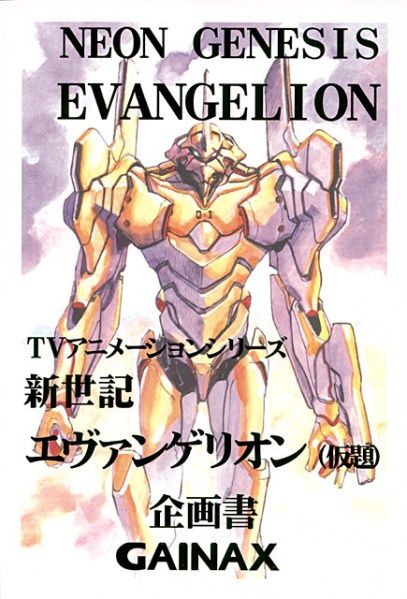
The anime/merchandising franchise Evangelion is one of the few animated series, like One Piece or Gundam, to have achieved true cultural mainstream status in Japan. Even people who have never watched an episode of the TV series (or seen an installment of the movie, or read a chapter of the comic, or played one of the pachinko machine adaptations, or shaved with one of the Eva razors, or eaten one of the Eva burgers… like we said, franchise) can recognize its iconic characters and giant robots.
It wasn’t always like that, though. When Evangelion (or simply Eva, as its fans call it) began airing in 1995, its robot designs took some getting used to. Whereas most anime robots were inspired by a body builder’s physique, Eva’s machines had an almost gangly appearance, with lanky limbs, stooped posture, and what appeared to be tennis shoes. Their fragile look would turn out to be a perfect match for the psyches of their teenaged pilots, but things didn’t start out that way, as shown in Eva’s early planning portfolio.
▼ The final Evangelion design
The initial design kept much more in line with tradition, with broad shoulders and a helmeted look evocative of an NFL running back in full pads. The coloring is also much simpler and brighter, with an overall more kid-friendly feel that prompted one Japanese Internet user to comment, “Looks more like a Power Ranger.”
Concept sketches for protagonist Shinji’s robot are even more heroic, with six-pack abs and swooping shoulder extensions making it look like an angelic knight in shining armor.
It’s also shown wielding a gigantic samurai sword, as opposed to the much more sensibly sized combat knife it carries in the franchise now.
Speaking of Eva’s main character, Shinji’s physical design didn’t change much, although seeing him smiling mischievously is a bit of a shock, given how he spends most of the series dealing with crippling levels of depression and emotional isolation. The accompanying notes describe him as a “quiet” honor student who “develops as a person by experiencing various events,” which, while still accurate in the series’ final form, is a pretty impressive case of understatement.
There’s no mistaking fellow pilots Asuka and Rei, despite Asuka’s hair being shorter and Rei’s a far less dazzling shade of blue than in their TV incarnations.
▼ Final Asuka and Rei designs
Tactician Misato and scientist Ritsuko’s ‘80s inspired clothing didn’t quite make the final cut, nor did Ritsuko’s love of bonsai and punk rock, as stated in the production notes.
The document also makes reference to 27 Angels–the extraterrestrial creatures Eva’s heroes fight against–as opposed to the 17 which appear in the anime.
But by far the most shocking divergence from what Evangelion eventually became lies tucked away in the initial story synopsis, with a tinny little blurb for its 26th and final TV episode that promises, “All mysteries and drama are resolved.”
Sixteen years and five theatrical versions later, Eva still hasn’t come to a decisive conclusion. Not that its masses of fans are complaining. It’s true that each new installment of the franchise leaves viewers scratching their heads, but that’s OK when it also but leaves them on the edge of their seats.
Source: Livedoor
Top image: Livedoor
Insert images: Cosplay Island, Livedoor, Anime Dump

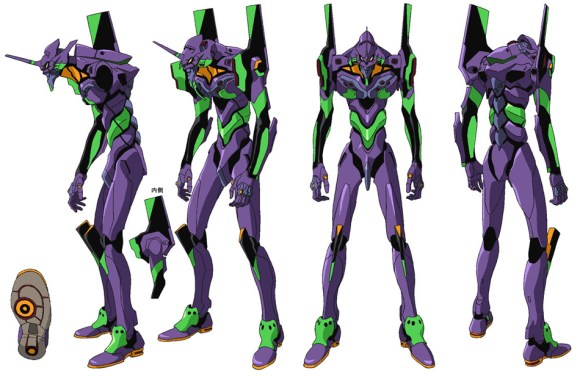
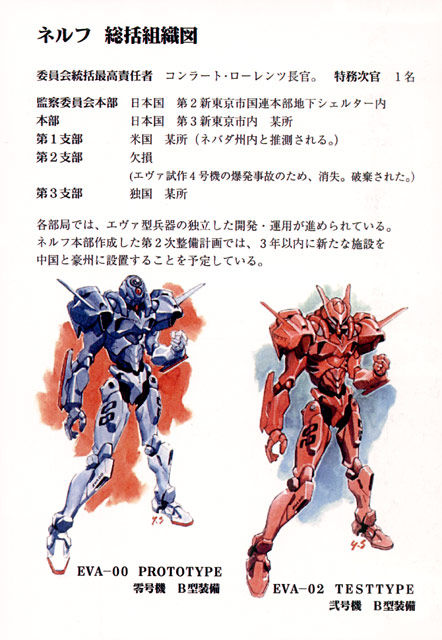
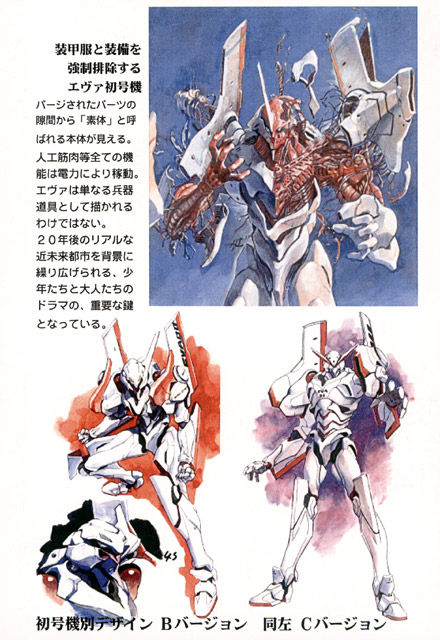
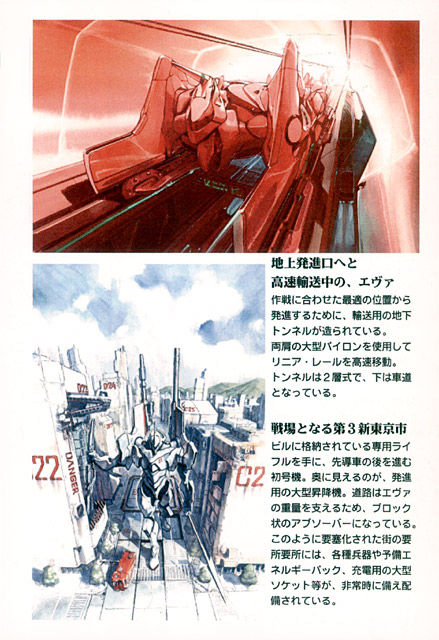
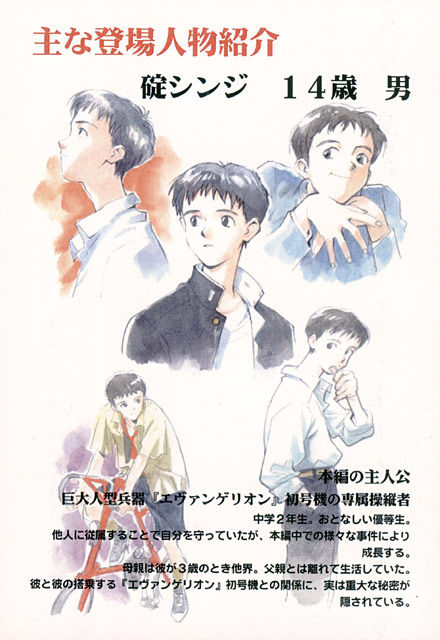
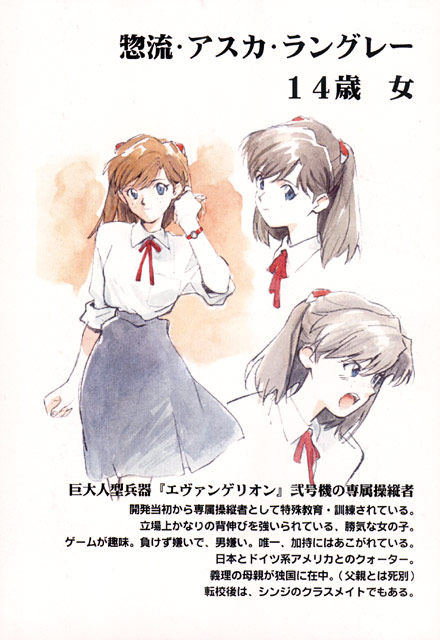
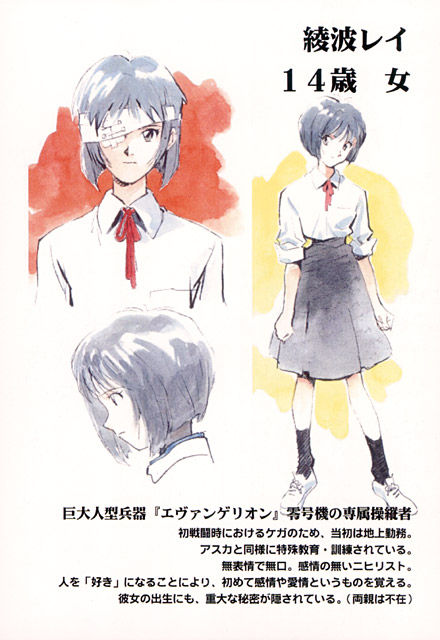
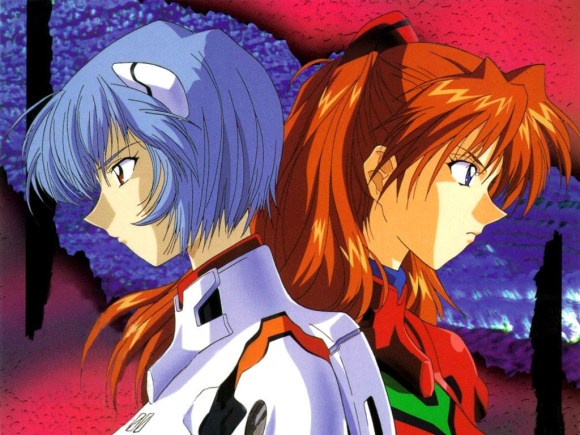
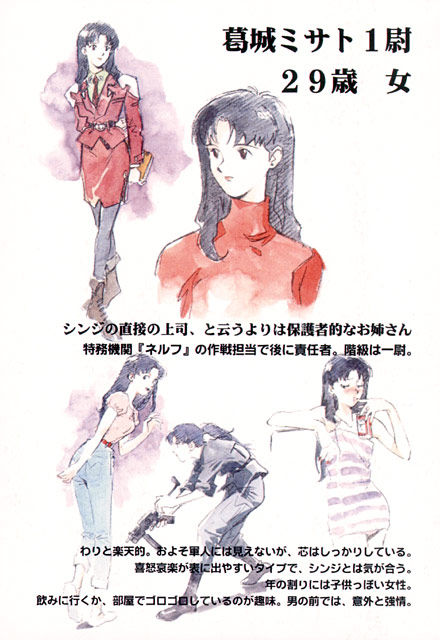
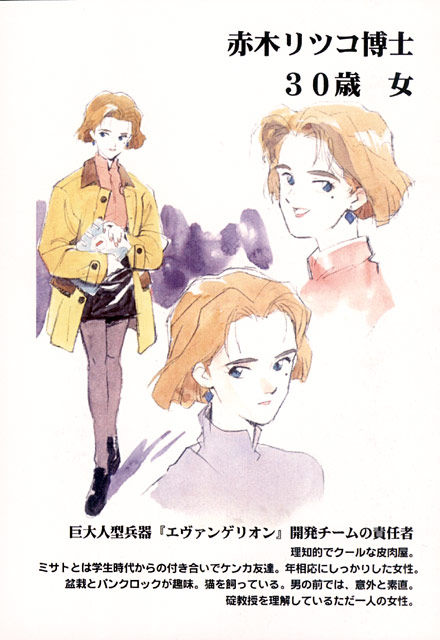
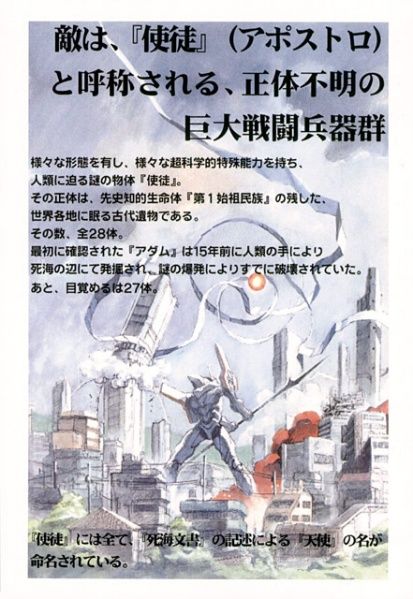
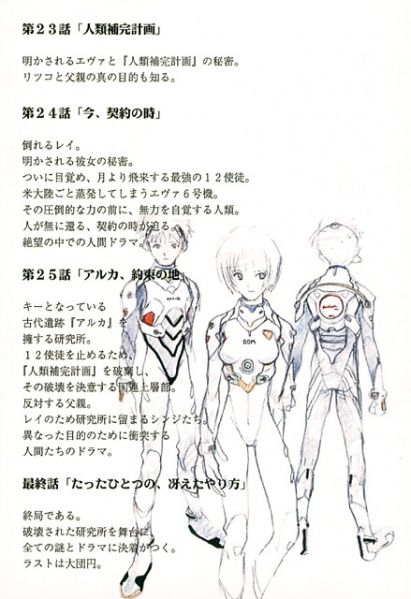
 Evangelion loafers – Never worry about tying your shoes or failing to make an impression
Evangelion loafers – Never worry about tying your shoes or failing to make an impression Evangelion lingerie is sure to help your otaku partner get into Beast Mode
Evangelion lingerie is sure to help your otaku partner get into Beast Mode New trailer for final Evangelion movies is as crazy as it is beautiful【Video】
New trailer for final Evangelion movies is as crazy as it is beautiful【Video】 Final Evangelion movie’s voice recording is almost done, Shinji saved for last, says actress
Final Evangelion movie’s voice recording is almost done, Shinji saved for last, says actress We can (not) decide which of these stylish Evangelion boots we like best
We can (not) decide which of these stylish Evangelion boots we like best Disney princesses get official manga makeovers for Manga Princess Cafe opening in Tokyo
Disney princesses get official manga makeovers for Manga Princess Cafe opening in Tokyo Our reporter takes her 71-year-old mother to a visual kei concert for the first time
Our reporter takes her 71-year-old mother to a visual kei concert for the first time Beautiful new Final Fantasy T-shirt collection on the way from Uniqlo【Photos】
Beautiful new Final Fantasy T-shirt collection on the way from Uniqlo【Photos】 Hey, Japanese taxi driver! Take us to your favorite restaurant in Tsuruga City!
Hey, Japanese taxi driver! Take us to your favorite restaurant in Tsuruga City! Foreign English teachers in Japan pick their favorite Japanese-language phrases【Survey】
Foreign English teachers in Japan pick their favorite Japanese-language phrases【Survey】 Is the new Shinkansen Train Desk ticket worth it?
Is the new Shinkansen Train Desk ticket worth it?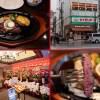 A new meaty dawn for Akihabara as neighborhood’s best steak/hamburger steak restaurant reopens
A new meaty dawn for Akihabara as neighborhood’s best steak/hamburger steak restaurant reopens Conan O’Brien turns into a goldfish for a surprise Korean drama cameo
Conan O’Brien turns into a goldfish for a surprise Korean drama cameo New Pokémon cakes let you eat your way through Pikachu and all the Eevee evolutions
New Pokémon cakes let you eat your way through Pikachu and all the Eevee evolutions Randomly running into a great sushi lunch like this is one of the best things about eating in Tokyo
Randomly running into a great sushi lunch like this is one of the best things about eating in Tokyo We try out “Chan Ramen”, an underground type of ramen popular in the ramen community
We try out “Chan Ramen”, an underground type of ramen popular in the ramen community New Studio Ghibli bedding sets are cool in all senses of the word
New Studio Ghibli bedding sets are cool in all senses of the word Our Japanese reporter visits Costco in the U.S., finds super American and very Japanese things
Our Japanese reporter visits Costco in the U.S., finds super American and very Japanese things There’s a park inside Japan where you can also see Japan inside the park
There’s a park inside Japan where you can also see Japan inside the park Japanese convenience store packs a whole bento into an onigiri rice ball
Japanese convenience store packs a whole bento into an onigiri rice ball Hanton rice — a delicious regional food even most Japanese people don’t know about, but more should
Hanton rice — a delicious regional food even most Japanese people don’t know about, but more should Final Fantasy, Kingdom Hearts, and Dragon Quest pet product line announced by Square Enix
Final Fantasy, Kingdom Hearts, and Dragon Quest pet product line announced by Square Enix Studio Ghibli releases Kiki’s Delivery Service chocolate cake pouches in Japan
Studio Ghibli releases Kiki’s Delivery Service chocolate cake pouches in Japan Japan’s bone-breaking and record-breaking roller coaster is permanently shutting down
Japan’s bone-breaking and record-breaking roller coaster is permanently shutting down New definition of “Japanese whiskey” goes into effect to prevent fakes from fooling overseas buyers
New definition of “Japanese whiskey” goes into effect to prevent fakes from fooling overseas buyers Foreign passenger shoves conductor on one of the last full runs for Japan’s Thunderbird train
Foreign passenger shoves conductor on one of the last full runs for Japan’s Thunderbird train Kyoto bans tourists from geisha alleys in Gion, with fines for those who don’t follow rules
Kyoto bans tourists from geisha alleys in Gion, with fines for those who don’t follow rules Studio Ghibli unveils Mother’s Day gift set that captures the love in My Neighbour Totoro
Studio Ghibli unveils Mother’s Day gift set that captures the love in My Neighbour Totoro Domino’s Japan now sells…pizza ears?
Domino’s Japan now sells…pizza ears? Toyota built a life-sized Miraidon Pokémon and are letting people test drive it this weekend
Toyota built a life-sized Miraidon Pokémon and are letting people test drive it this weekend New Japanese KitKat flavour stars Sanrio characters, including Hello Kitty
New Japanese KitKat flavour stars Sanrio characters, including Hello Kitty Sales of Japan’s most convenient train ticket/shopping payment cards suspended indefinitely
Sales of Japan’s most convenient train ticket/shopping payment cards suspended indefinitely Sold-out Studio Ghibli desktop humidifiers are back so Totoro can help you through the dry season
Sold-out Studio Ghibli desktop humidifiers are back so Totoro can help you through the dry season Japanese government to make first change to romanization spelling rules since the 1950s
Japanese government to make first change to romanization spelling rules since the 1950s Ghibli founders Toshio Suzuki and Hayao Miyazaki contribute to Japanese whisky Totoro label design
Ghibli founders Toshio Suzuki and Hayao Miyazaki contribute to Japanese whisky Totoro label design Doraemon found buried at sea as scene from 1993 anime becomes real life【Photos】
Doraemon found buried at sea as scene from 1993 anime becomes real life【Photos】 Tokyo’s most famous Starbucks is closed
Tokyo’s most famous Starbucks is closed One Piece characters’ nationalities revealed, but fans have mixed opinions
One Piece characters’ nationalities revealed, but fans have mixed opinions We asked a Uniqlo employee what four things we should buy and their suggestions didn’t disappoint
We asked a Uniqlo employee what four things we should buy and their suggestions didn’t disappoint Princesses, fruits, and blacksmiths: Study reveals the 30 most unusual family names in Japan
Princesses, fruits, and blacksmiths: Study reveals the 30 most unusual family names in Japan Studio Ghibli’s new desktop Howl’s Moving Castle will take your stationery on an adventure
Studio Ghibli’s new desktop Howl’s Moving Castle will take your stationery on an adventure Voice of Evangelion’s main character sad to see how often he gets left out of anime group shots
Voice of Evangelion’s main character sad to see how often he gets left out of anime group shots “You’re so messed up!” Complaints come after broadcaster edits infamous Evangelion scene
“You’re so messed up!” Complaints come after broadcaster edits infamous Evangelion scene Full-size Evangelion statue appears at Japanese theme park with entry plug synchronization tests
Full-size Evangelion statue appears at Japanese theme park with entry plug synchronization tests Real-life Evangelion apartment in Japan is ultra-cheap, ultra-anime【Photos】
Real-life Evangelion apartment in Japan is ultra-cheap, ultra-anime【Photos】 Evangelion undies are back, but this time for male fans of the hit science fiction anime
Evangelion undies are back, but this time for male fans of the hit science fiction anime Neon Genesis Evang-olfian? Adorable Angel and Pen Pen plushies are here to keep clubs safe
Neon Genesis Evang-olfian? Adorable Angel and Pen Pen plushies are here to keep clubs safe Limited edition Evangelion Asuka Telecasters on sale this June
Limited edition Evangelion Asuka Telecasters on sale this June New Evangelion lingerie and roomwear range features five favourite characters and a penguin!
New Evangelion lingerie and roomwear range features five favourite characters and a penguin! Dress up your smartphone for battle with these cool Evangelion phone covers!
Dress up your smartphone for battle with these cool Evangelion phone covers! Free official Evangelion coloring book-style art released, fans share new looks for Asuka
Free official Evangelion coloring book-style art released, fans share new looks for Asuka Things to pick up at 7-Eleven: Milk, melon bread, Evangelion sports car
Things to pick up at 7-Eleven: Milk, melon bread, Evangelion sports car Evangelion Store popularity contest reveals surprising results for a former fan favorite
Evangelion Store popularity contest reveals surprising results for a former fan favorite You can now buy a life-size Rei Ayanami figure for $17,500, plus an even more expensive Eva【Pics】
You can now buy a life-size Rei Ayanami figure for $17,500, plus an even more expensive Eva【Pics】 Evangelion chocolates: The Valentine’s Day gift with serious visual impact
Evangelion chocolates: The Valentine’s Day gift with serious visual impact
Leave a Reply